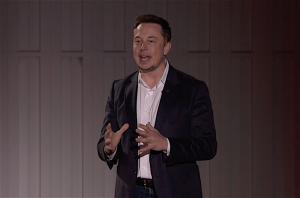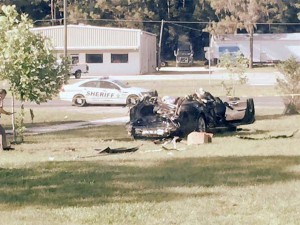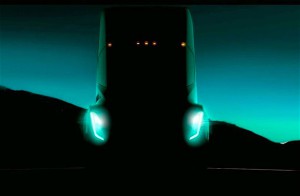It’s turning into a tough week for Tesla, the battery-carmaker hit with a series of potentially serious setbacks, delays and challenges.
That includes the departure of one of CEO Elon Musk’s most trusted lieutenants and an unexpected delay in the planned roll-out of Tesla’s heavy-duty electric truck. Meanwhile, the automaker is going to be facing a much more direct challenge from a broad range of established automakers now moving into the battery-car space.
Meanwhile, the National Transportation Safety Board this week issued its conclusion that Tesla’s Autopilot system played a “major role” in a May 2016 crash that killed a former Navy SEAL driving a Tesla Model S sedan.
Investors seem to be taking the developments in stride, however, Tesla stock still trading near its all-time high even though a number of major carmakers, including BMW, Volkswagen and Mercedes-Benz, announced plans to electrify virtually every model in their product lines over the next five to 10 years.
When Tesla announced plans to start building a range of pure battery-electric vehicles early in the new millennium, few took that goal seriously, noting the technical and marketing challenges and the obstacles facing any new entrant to the well-entrenched auto industry. Today, Tesla has a valuation higher than General Motors and a target of selling 500,000 vehicles next year, a shift to high gear that, it promises, will finally put it solidly in the black after years of losses.
(NTSB lists Tesla’s Autopilot as factor in May 2016 fatal crash. For the story, Click Here.)
Driven by a variety of factors, once-reluctant mainstream automakers are suddenly shifting gears. Three months ago, Volvo announced plans to fully switch to electrified powertrains – a mix of hybrids, plug-ins and full BEV – for all of its products. Jaguar Land Rover announced a similar strategy last month. And at this week’s Frankfurt Motor Show, BMW, VW and Mercedes also outlined across-the-board electrification plans, backing their targets up with more than $30 billion in planned, combined investments.
Other manufacturers, such as Toyota and Nissan, are expected to follow with similar strategies, and industry analysts warn that could hammer Tesla in a variety of ways, not only offering true believers alternatives to the California carmaker’s products but forcing it to significantly ramp up investments in order to play in more segments within the emerging battery-electric market.
The transformation of the broader industry comes just as one of Tesla’s key, long-time executives has tendered his resignation. Diarmuid O’Connell was one of the rare senior managers who seemed to have found a way to negotiate dealing with Tesla founder and CEO Musk, a man who even allies have described as extremely difficult to work for over a long period of time. Tesla has seen a revolving door of top managers during the past decade, some recruited by competitors, other reportedly just quitting in frustration.
Exactly why O’Connell, vice president of business development, left now wasn’t revealed, a statement from Tesla falling back on the classic explanation that “he felt the time was right to move on and spend more time with his family.”
The statement noted “For more than 11 years, Diarmuid has played an important role in helping Tesla grow from a small startup to a company with a presence around the world. He started with Tesla before the rollout of Roadster,” and remained onboard until the company was able to put its first mainstream battery-electric vehicle, the Model 3, into production.
The reason behind Tesla’s third big challenge this week also hasn’t been revealed, though the company confirmed it has pushed back by a month the planned unveiling of its first heavy-duty battery-electric truck.
(Click Here for details about other top executives leaving Tesla.)
“Tesla Semi truck unveil & test ride tentatively scheduled for Oct 26th in Hawthorne,” CEO Musk announced in a Wednesday tweet. He had previously indicated the debut would occur in September.
Now that the Model 3 is on sale, Musk has outlined plans for a number of additional products. That includes an all-new version of the original Tesla Roadster, a compact electric SUV, a battery pickup and a heavy-duty semi-truck.
Though the Tesla Semi isn’t expected to come near to the 1,000-mile range of conventional diesel heavy-duty trucks, the carmaker is expected to target local and regional delivery operations where a range of about 200 miles could be suitable.
Tesla is also reportedly working on ways to make its Semi autonomous, even fully driverless, something that could challenge emerging alternatives like self-driving trucks under development at Uber’s Otto and Daimler AG’s Freightliner. Meanwhile, Utah start-up Nikola Motors, as well as Toyota, are offering another “green” truck option with plans to develop hydrogen fuel-cell-powered semis.
The other big challenge for Tesla this week came when the NTSB issued its ruling on the crash that killed Joshua Brown on a Florida highway last year. Though the National Highway Traffic Safety Administration largely put the onus on Brown – who apparently failed to intervene when the collision seemed imminent – the NTSB came down hard on Tesla.
As TheDetroitBureau.com first reported yesterday, the agency’s report focused on “operational limitations” in the Model S driven by former Navy SEAL Joshua Brown which, it concluded, played a “major role” in the collision of his sedan with a semi-truck that had pulled into its path.
(To see more about Tesla expanding its product portfolio beyond the Model 3, Click Here.)
Tesla hailed the original NHTSA ruling and tried to minimize its concerns about the NTSB report. “People die every day in car accidents,” it said in a statement. “Change always comes with risks, and zero tolerance for deaths would totally stop innovation and improvements.”



